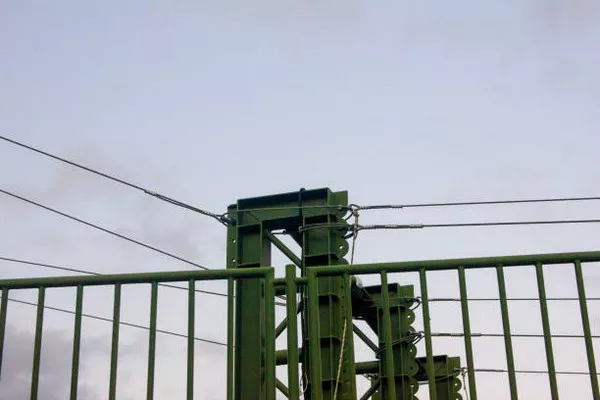What is a Power Transformer?
A power transformer is a crucial electrical device used in the transmission and distribution of electricity. Its primary function is to step up or step down voltages efficiently and safely, enabling electricity to be transported over long distances from power plants to substations, and then to consumers. This article delves into the inner workings of power transformers, their importance in the electrical grid, and the key principles behind their operation.
How Do Power Transformers Work?
At its core, a power transformer operates on the principles of electromagnetic induction. It consists of two coils of wire—an input coil (primary winding) and an output coil (secondary winding)—wound around a common core typically made of laminated steel. When an alternating current (AC) flows through the primary winding, it creates a changing magnetic field in the core. This changing magnetic field induces a voltage in the secondary winding based on the ratio of the number of turns in each winding. Thus, transformers can increase (step up) or decrease (step down) AC voltages with high efficiency, allowing electricity to be transmitted and distributed at different voltage levels as required.
Why are Transformers Essential in Power Transmission?
Transformers play a vital role in power transmission and distribution networks for several reasons. Firstly, they enable the efficient transmission of electricity over long distances. By stepping up the voltage at the generation source, transformers reduce the current flowing through transmission lines, thereby minimizing energy losses due to resistance. At substations near populated areas, the voltage is stepped down again for safe distribution to homes and businesses. Additionally, transformers provide isolation and protection. They electrically isolate different parts of the power system, ensuring safety and preventing ground faults. Furthermore, transformers allow for flexibility in voltage levels, accommodating various types of electrical equipment and ensuring compatibility across the grid.
What Types of Power Transformers Exist?
Power transformers come in various types to suit different applications within the electrical grid. The main categories include distribution transformers and power transformers. Distribution transformers are typically used in distribution networks to step down voltage levels for commercial and residential use. These transformers are smaller and are often pole-mounted or pad-mounted. Power transformers, on the other hand, are used in high-voltage transmission systems to step up or step down voltages at substations. These transformers are much larger and are usually housed indoors.
How are Transformers Designed for Efficiency and Reliability?
Efficiency and reliability are critical aspects of transformer design. Transformers are designed with materials that minimize energy losses. The core is made from laminated steel sheets to reduce eddy currents, while the windings use conductors with low resistance. Efficient cooling systems such as oil or forced air help dissipate heat generated during operation, ensuring optimal performance. Moreover, transformers are built to withstand environmental stresses, electrical surges, and overloads. Robust insulation materials and protective devices are employed to enhance durability and longevity.
What are the Main Components of a Power Transformer?
A typical power transformer comprises several key components. The core, usually made of laminated silicon steel, provides a path for magnetic flux and reduces losses. The primary and secondary windings, made of copper or aluminum conductors, transfer electrical energy between voltage levels. Insulating materials such as oil or solid insulation separate conductive parts and provide dielectric strength. Additionally, tap changers allow adjustments to the transformer’s turns ratio, enabling voltage regulation. Cooling systems, including oil or air cooling methods, maintain the transformer’s operating temperature within safe limits.
How Do Transformers Ensure Safety and Reliability in the Grid?
Safety and reliability are paramount in electrical power systems. Transformers incorporate safety features to protect against faults and abnormal conditions. Buchholz relays, for instance, detect and respond to internal faults by isolating the transformer from the grid. Pressure relief devices prevent excessive internal pressure buildup. Transformers are also designed with lightning arresters and surge arresters to protect against voltage spikes and lightning strikes. Regular maintenance and testing are conducted to identify potential issues and ensure transformers operate safely and reliably throughout their service life.
What Innovations are Shaping the Future of Power Transformers?
The power industry is continually evolving, driven by advancements in technology and a growing focus on sustainability. Future transformers are expected to incorporate smart monitoring and diagnostic capabilities using IoT (Internet of Things) technologies. These features enable real-time monitoring of transformer conditions, allowing for predictive maintenance and improved reliability. Additionally, research is underway to develop transformers with higher efficiency and reduced environmental impact. Materials like amorphous alloys and superconductors hold promise for next-generation transformers that are more compact, energy-efficient, and environmentally friendly.
See Also What Does An Audio Transformer Do
In conclusion, power transformers play a pivotal role in the electricity supply chain, facilitating the efficient transmission and distribution of electrical energy across vast distances. These devices embody sophisticated engineering principles and are integral to ensuring a safe, reliable, and sustainable electrical grid. As technology advances, power transformers will continue to evolve, embracing innovations that enhance performance, efficiency, and environmental stewardship in the dynamic landscape of modern power systems.

